Real Christmas tree care guide – the best ways to look after your tree this month
Here's how to keep your real Christmas tree alive this season
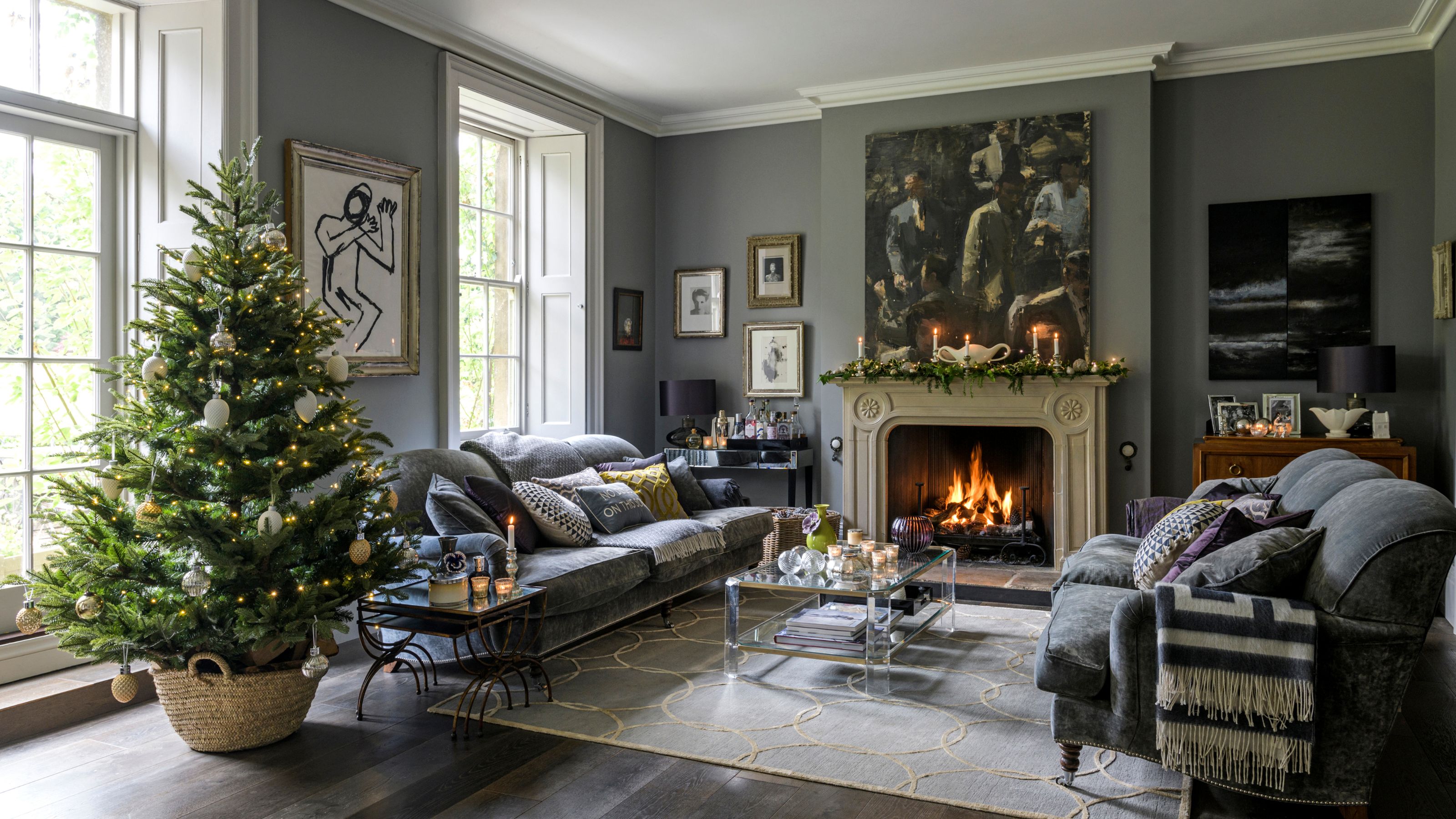

EDITOR’S NOTE: An earlier version of this article included a quote from a purported expert whose credentials we have not been able to verify. The quote has been removed. We regret this lapse in our verification process and have updated our internal protocols to reduce the risk of recurrence.
If you're lucky enough to have a spruce or fir tree at home but could use a few real Christmas tree care tips to keep it in tip-top shape, you've come to the right place.
There are so many benefits of a real Christmas tree, from the cosy fragrance to the traditional festive flair it can bring to the home.
'A fresh-cut Christmas tree offers a classic holiday experience, with a wide variety of sizes and the nostalgic scent of pine,' says Mairi Devlin, plant expert and head of Christmas at B&Q. 'It's ideal for those who prefer a lower-maintenance option and don’t mind recycling their Christmas tree after the festive season.'
Whether you've just bought a real Christmas tree for the first time or you've been in the real tree game for years, we've put together a real Christmas tree care guide to help you look after your tree.
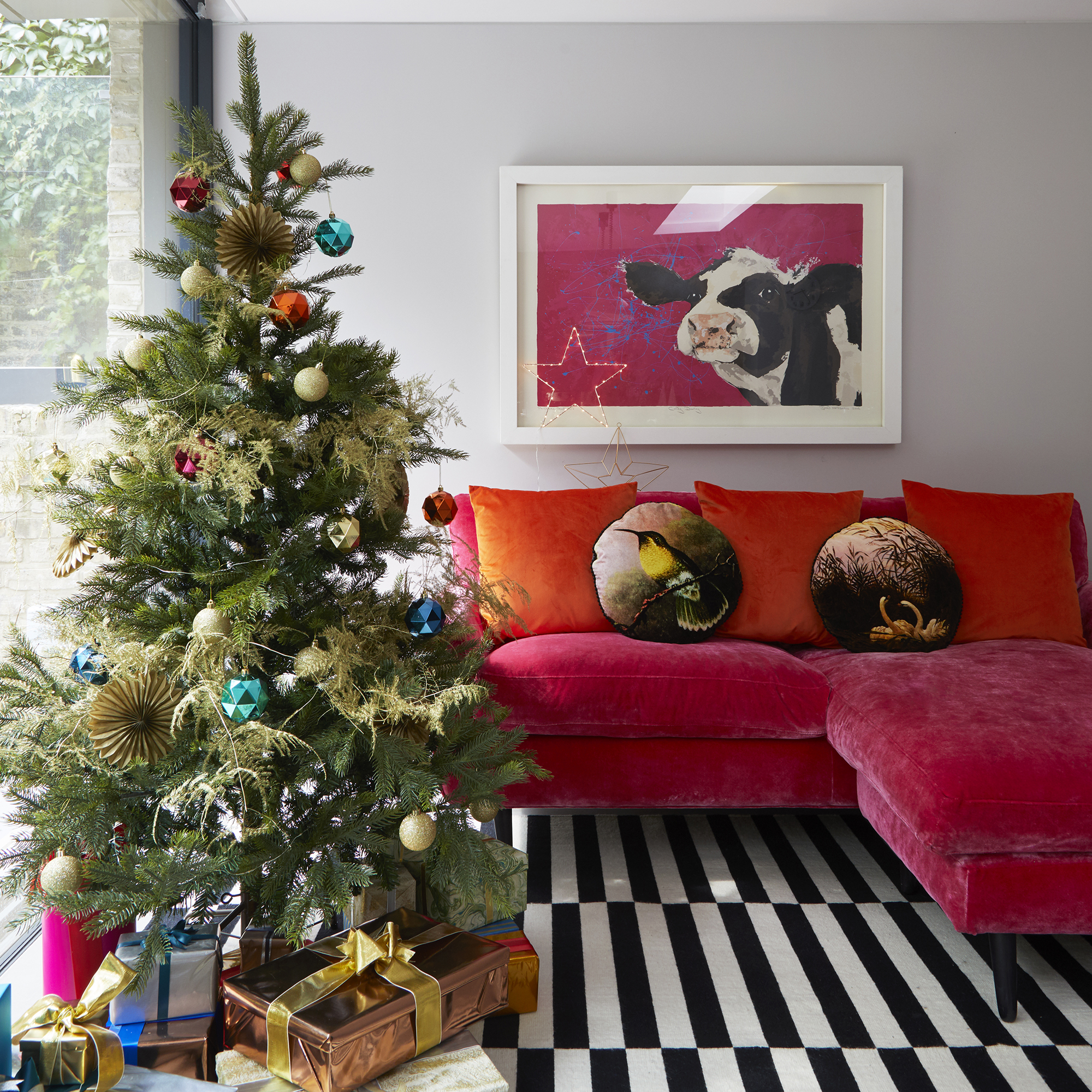
Real Christmas tree care guide
We've asked garden and tree experts for their best tips for looking after a freshly cut Christmas tree, from bringing it home to caring for it throughout December so that it looks fresh and full for the whole holiday season. There's nothing worse than a sad-looking tree that keeps dropping all its needles!
This real Christmas tree care guide will help you keep your tree in healthy and hearty condition all the way through to the 6th of January.
What you'll need
- A real Christmas tree like a Nordmann fir tree from B&Q
- A saw like the Draper Venom Wood Hand Saw from Amazon
- A Christmas tree stand with a water reservoir from Amazon

1. Bringing your Christmas tree home
So, you've brought a freshly cut Christmas tree home. What now?
Sign up to our newsletter for style inspiration, real homes, project and garden advice and shopping know-how
Take your tree out of the netting as soon as you get home so that the damp branches don't become a breeding ground for mould or fungus.
Then, you'll need to take out a saw and give the trunk a trim, just as you would cut the bottoms off of fresh flowers.
'Saw around half an inch off the bottom of the trunk of the tree, as this will remove any hardened sap that may affect the tree's ability to take up water,' says Graham Smith MCIHort, gardening expert at LBS Horticulture.
The key here is to put the trunk straight into water after making the cut. 'This will prevent the bottom of the trunk from hardening over with sap again, and trees can absorb a large amount of water on the first day after being cut,' Graham explains.

Graham Smith MCIhort is the national sales manager at LBS Horticulture. He has extensive knowledge in the horticultural and gardening industries, and prides himself on using this to help gardeners of all skills create their perfect outdoor space.
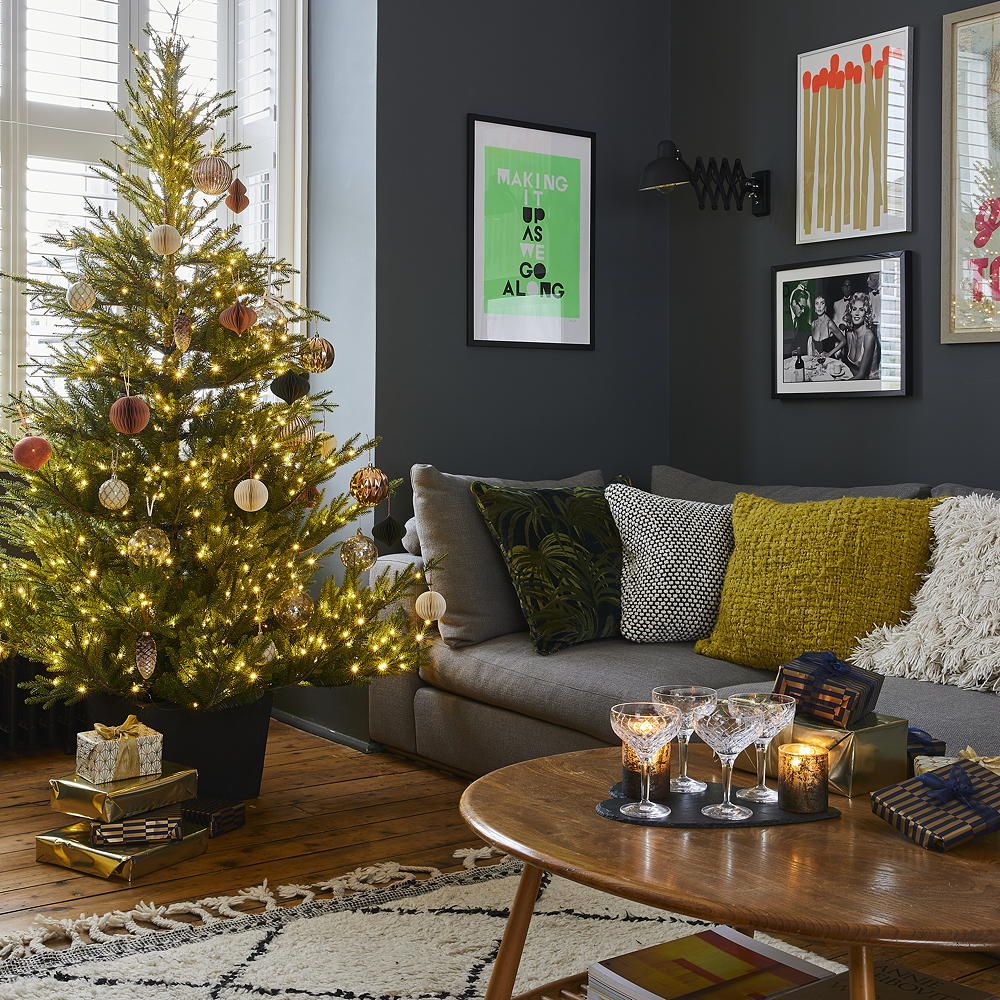
Don't decorate the tree straight away – Graham says you'll need to make sure the tree is taking up water first. 'Check if the water levels in the stand are declining every day – if they aren't, you may need to make another cut in the trunk,' he says.
2. Watering
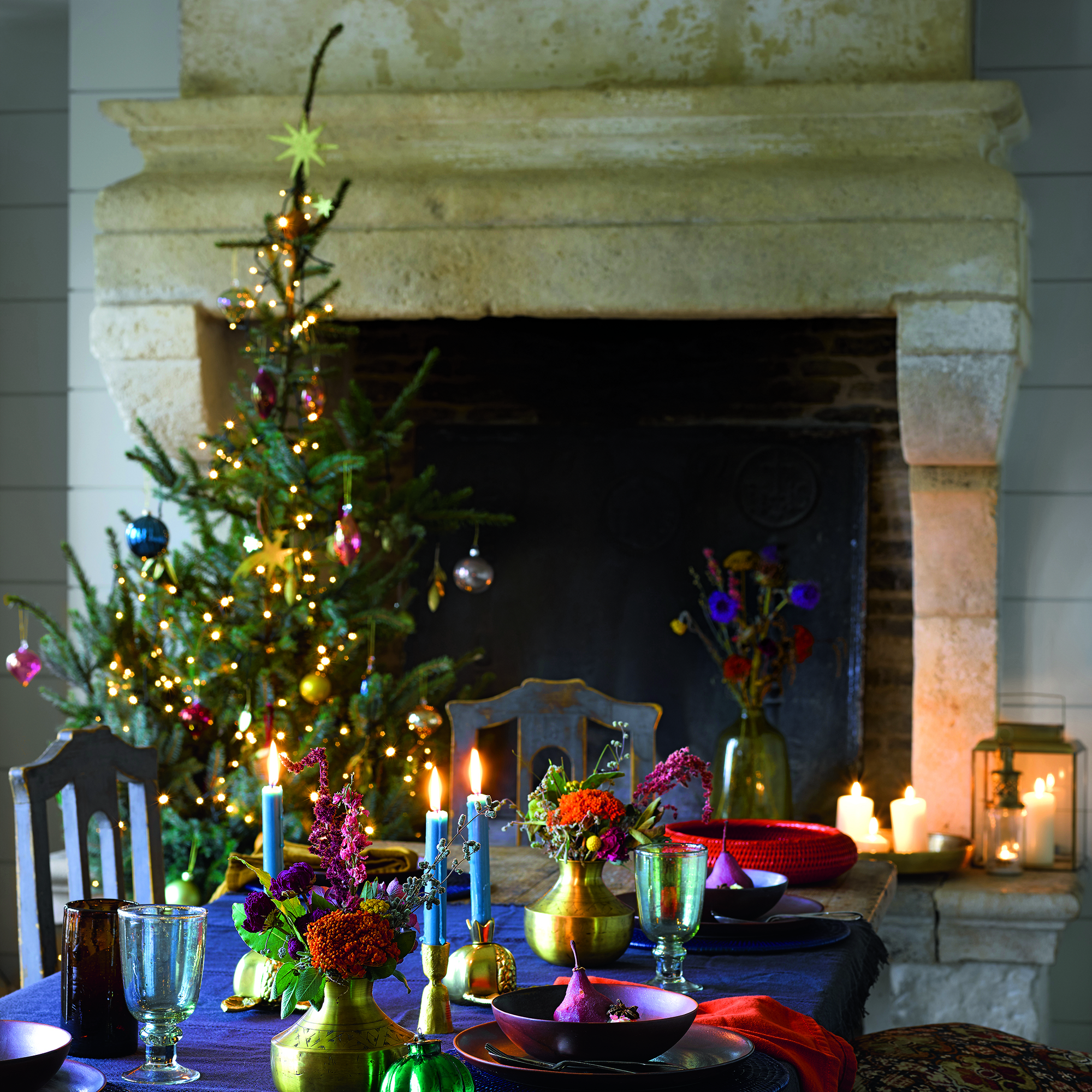
Wondering how often you should water a real Christmas tree? Well, they drink a lot of water, so you'll need to make sure your tree is standing in a container that can be easily topped up.
'Your Christmas tree needs watering every single day after you've put it up – so don't forget!' says Andrew White, gardening expert at Rhino Greenhouses. 'Watering your tree helps to keep it looking plump and fresh.'
But how much fresh water should you add daily?
Experts generally agree that trees can absorb 1 to 2 litres of water a day, and your tree needs 500ml at a bare minimum.
That said, you'll need to keep an eye on your tree to make sure you're giving it the right amount of water. 'If your tree ever starts to lose its shine a little, try and give it a little more water each day to breathe some life back into it,' says Andrew.
3. The right spot
If possible, place the tree somewhere it can get a few hours of natural light each day, but avoid direct sunlight.
Make sure the tree is secure in its holder or pot, and avoid whittling the trunk of a tree to fit a stand, as this can remove the most active cells from the outside of the trunk and make the tree thirsty.
Even more important, though, is where not to put your tree...
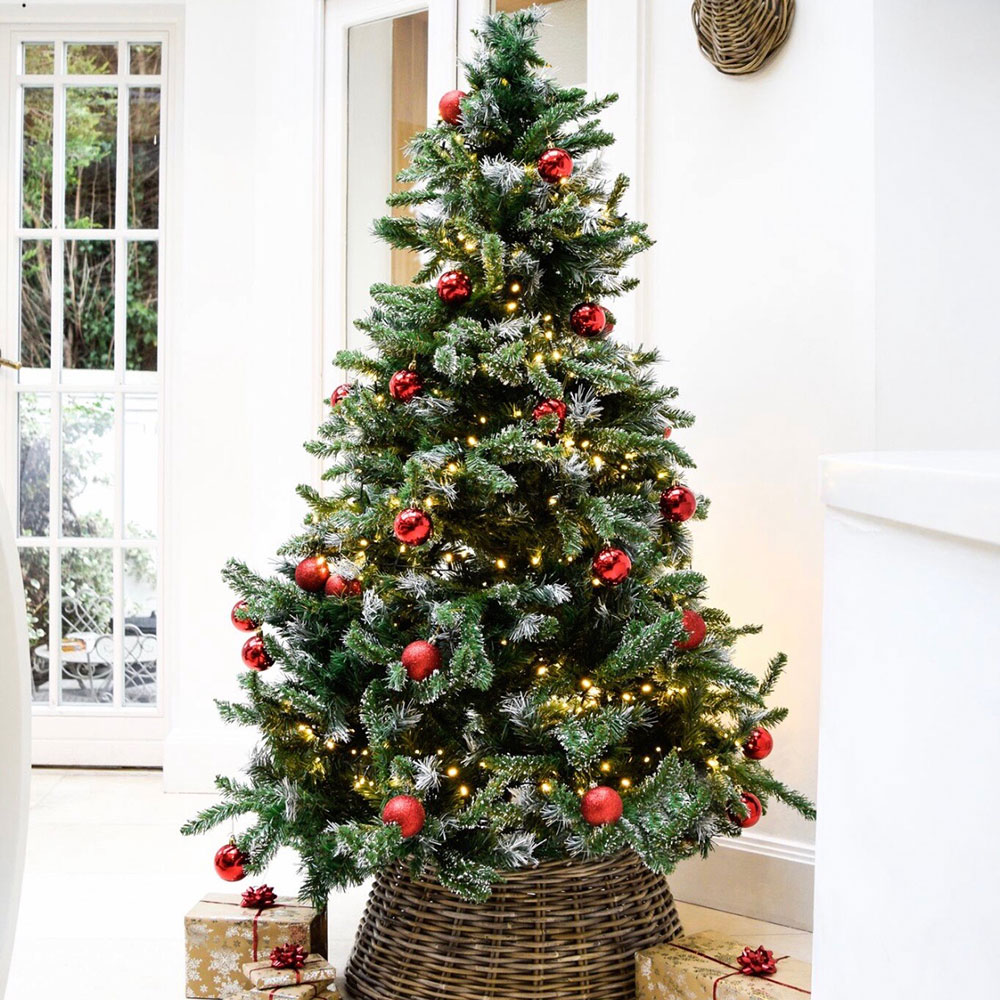
4. Things to avoid
To provide the best real Christmas tree care, treat your tree like you would an expensive bunch of flowers, and be mindful of how day-to-day things might affect it, such as heat and light. That way, a real Christmas tree will last as long as possible.
'Choose a space in the house that is away from any direct sources of heat to slow down the drying process,' says Gareth Mitchell, founder of Tree2myDoor. 'This can include anything from radiators, fireplaces, and even direct sunlight.'
For Christmas lights, opt for LEDs which won’t dry the branches out as much, and always remember to turn off your lights before going to bed. Avoid Incandescent lights which can produce more heat and dry out the tree.
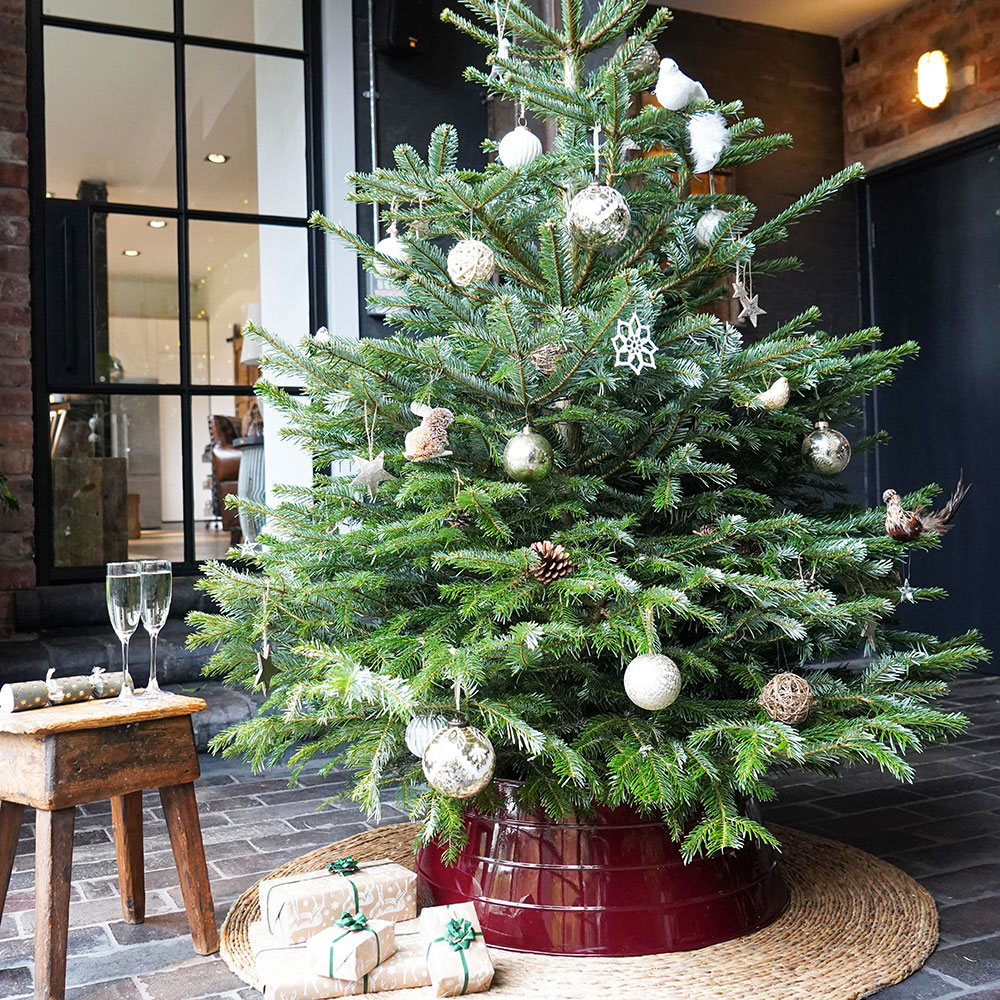
You should also keep your real tree away from any fruit bowls in the home. 'Although they may be a staple during the festive period, fruit gives off ethylene gas which affects plants and trees, making the needles drop quicker,' explains Kamalvir Dhillon from B&Q.
FAQs
How long do you let a real Christmas tree sit before decorating?
Ideally, you should let your freshly cut Christmas tree sit for around 24 hours before decorating it. This will give it a chance to take up plenty of water and allow the leaves and branches to unfurl and settle. If you find the water levels haven't changed, the base of the tree may have resealed itself, and you might need to saw half an inch from the bottom of the trunk again.
Can I put a real Christmas tree outside?
If you've gone for a potted Christmas tree, you can plant it in the garden and dress it up as you would an outdoor tree, but you'll still need to care for it properly.
'The weather in your area will also affect the kind of tree that you can place outside, as trees with delicate branches are unlikely to cope well with heavy snow or rainfall,' says gardening expert Graham.
'Ensure that your outside tree has a sturdy stand, and reinforce it with heavy objects such as sandbags to keep it anchored. Any decorations and lights used on an outdoor tree will need to be weather resistant, and look for materials that are resistant to cracking or fading.'
Now that you've got your real Christmas tree care plan sorted, you can think about decorating your tree. Exciting!

Thea Babington-Stitt is the Assistant Editor for Ideal Home. Thea has been working across some of the UK’s leading interiors titles for nearly 10 years.
She started working on these magazines and websites after graduating from City University London with a Masters in Magazine Journalism. Before moving to Ideal Home, Thea was News and Features Editor at Homes & Gardens, LivingEtc and Country Homes & Interiors.
- Katie SimsContributor
- Holly CockburnContent Editor
- Sophie KingGardens Editor